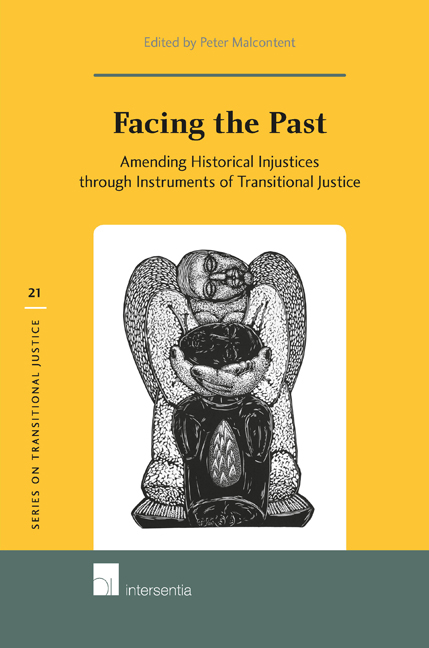Do Bystanders Exist?
from PART I - TRANSITIONAL JUSTICE. WHAT'S IN THE NAME?
Published online by Cambridge University Press: 15 December 2017
Summary
INTRODUCTION
Victims and perpetrators are often referred to as two completely separate and homogenous sets of people. However, the reality of many historical injustices is more complex. Neither all victims nor all perpetrators are necessarily comparable and the two groups are rarely separate and distinct. It is in particular the relationship between these actors at different time periods that matters. Some individuals are both victims and perpetrators or were victims and then became primarily perpetrators. The most well-known example nowadays is child soldiers who, after having been abducted, are forced to murder one or more of their friends of the same age and of the same tribal group. The transformation from victim to perpetrator can be sudden but it also may continue over a long period of time. In many training camps for creating professional torturers the recruits are first victimised to obtain total obedience, which is a requirement to be able to torture in detention or concentration centres. For example, this occurred in the military training center of the Greek Regime of the Colonels from 1967–1974. In the words of former prison warden and chief torturer M. Petrou: ‘You couldn't think like an ordinary human being anymore (…) They changed us into instruments. People without a will of their own who obey. You were trained not to think’.
Repairing historical injustices in post-conflict situations becomes even more complicated because of the presence of a third group of people, the so-called bystanders. This is the large group situated somewhere in between the victims and the perpetrators. Its comprised of those who did not do anything wrong themselves, but on the other hand did not do anything to prevent others from committing their crimes. How should we perceive their responsibilities? Do neutral bystanders exist? Or are they always either collaborators or rescuers depending on their level of assistance to the perpetrators or victims? In this chapter the bystander's role at the national (internal bystanders) and international level (external bystanders) is studied. What matters is the interaction between these bystanders and the other two groups in the atrocity triangle: the perpetrators and the victims.
- Type
- Chapter
- Information
- Facing the PastAmending Historical Injustices Through Instruments of Transitional Justice, pp. 27 - 42Publisher: IntersentiaPrint publication year: 2016



